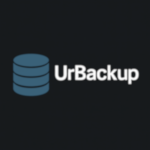Vorta + Borg: Simple, Safe, and No-Nonsense Backup Setup
If you’ve ever used Borg from the terminal, you know it’s solid — fast, encrypted, and smart about storage. But typing out the same flags every time? Not so fun. That’s where Vorta steps in. It gives Borg a desktop interface that handles scheduling, pruning, and restores without needing a shell script or cheat sheet.
Together, they form a surprisingly low-friction backup solution. It’s not some bloated cloud sync — it’s lean, local (or remote via SSH), and once configured, it pretty much stays out of the way.
Why This Combo Works
| What It Does | Why That Matters |
| Encrypted backups | Data is encrypted before it ever leaves your machine |
| Automatic deduplication | Identical files or chunks aren’t stored twice |
| Vorta’s interface | Clean UI to manage jobs, logs, keys, and schedules |
| Borg’s efficiency | Backs up only what changed — even inside files |
| SSH target support | Backup to any server you can reach with a key |
| Flexible retention | Set up rules for what to keep, what to forget |
| Restore-friendly | You can pull out one file or a whole folder easily |
| Cross-platform (mostly) | Linux and macOS are native; Windows works via WSL or Docker |
What You’ll Need
– Borg: Installed separately (via package manager or binary)
– Vorta: Runs as a desktop app (PyQt, packaged via Flatpak or brew)
– Backend: Local drive, mounted share, or SSH-accessible server
– Security: All archives use client-side AES-CTR with HMAC integrity
– Scheduling: Vorta sets up background jobs using system tools
– Restore options: In-place, new location, or mountable archive
This isn’t a service — it doesn’t run all the time. Vorta triggers backups when scheduled or clicked.
Getting It Running (Linux Example)
- Install Borg:
sudo apt install borgbackup
- Install Vorta via Flatpak:
flatpak install flathub com.borgbase.Vorta
- Launch Vorta:
– Set up a new repository — either on a local disk or remote via SSH
– Select which folders you want to protect
– Configure your schedule, retention, and compression
– Save and forget — it’ll run quietly in the backgroundNo cronjobs or scripts — it’s all managed from the GUI.
When This Setup Makes Sense
– You want real encryption without paying for a commercial cloud
– Your backups should be compact and only store what changed
– You need an easy way to restore one file from two weeks ago
– You’re backing up to a remote server you already control
– You’d rather not troubleshoot failed cloud syncs ever again
Pros and Potential Annoyances
What’s strong:
– Vorta makes Borg accessible for non-terminal users
– Schedules and pruning are easy to set once, then forget
– No data leaves your control unless you tell it to
– You can keep multiple profiles — one local, one offsite
– Restores are intuitive, even partial ones
What’s less ideal:
– Windows isn’t officially supported (requires workaround)
– Vorta’s logs sometimes show Borg errors without much explanation
– You still need to understand how Borg works — just a bit
– Backups can be slow over weak SSH links without tuning
– No real-time monitoring — it’s fire-and-forget unless you check
Closing Thoughts
There are plenty of flashy backup tools. This one isn’t flashy — it’s quiet, sharp, and does the job. If you like to know where your data is, how it’s stored, and don’t want to rely on someone else’s infrastructure, Vorta + Borg is worth setting up. It doesn’t talk much. But when something breaks and you need your files back — it usually has them.






